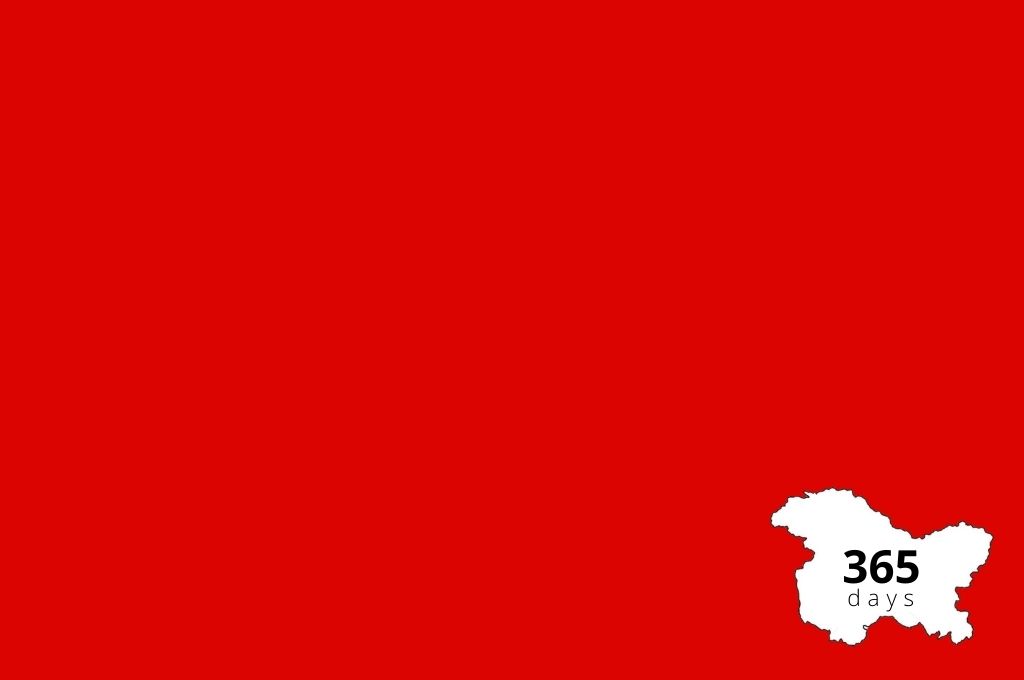Disclaimer: Much has been published on the topic (though some would argue, not enough). The list below is in no way exhaustive. If there’s something you have read and found useful, add it in the comments below so others have access to it as well.
1. A brief look into the background
- Answers to some common questions about the Instrument of Accession, the abrogation of Articles 370 and 35A, and the constitutional implications of these changes.
- A succinct timeline of events in Kashmir from August 1947 – August 2019.
- Understanding settler colonialism and how it arrived in Kashmir.
- A look further back into history—how Kashmir’s oppression and colonial exploitation started long before the formation of modern India.

“On August 5, 2019, a year ago today, seven million people in the valley of Kashmir were locked into their homes under a strict military curfew.”
2. The impact of the decision on
- Economy and jobs
- Human rights (written five and eleven months post August 5th, 2019)
- Environment
- Communication and accessing care during COVID-19
- Mental health
- Women’s reproductive health
- Education (for students and educators)
- Children
- Health (as a result of pellet guns used on protestors)
3. Looking at the year gone by
- A chronology of the legal measures since August 2019, and the response of the judiciary.
- In this video, six Kashmiris (Nargis Khatoon, Arif, Muneer Alam, Mursaleen Abbas Mir, Fahad Shah, Vijdan) talk to The Quint about their year in lockdown and how it affected their lives.
- “If we fail to acknowledge the enormity of the moment we are in, we are missing the big picture. There are a series of decisions that trample on the values that this country has stood for so far—some extent of secularism, some extent of federalism, some extent of fairness and justice.” – Kashmiri activist Shehla Rashid talks to the Huffington Post about what politics in Kashmir means to a young Kashmiri like her.
- “The whole state has been imprisoned for the past year, deprived of political rights, modern means of communications, the internet. The reality is that protest has been contained simply because the state has become a large jail. Locking everyone up can be a strategy to fight crime, but with everyone in, on whose behalf are you fighting crime, anyway?” – Manoj Joshi writes for The Wire, in his piece on Modi’s Kashmir ‘master stroke’ and why it failed.
- “On August 5, 2019, a year ago today, seven million people in the valley of Kashmir were locked into their homes under a strict military curfew. Thirteen thousand people, ranging from young children and teenage stone pelters to former chief ministers and major pro-India politicians, were arrested and put into preventive detention, where many of them still remain. At midnight on 4 August, phones went dead and internet connections were cut.” – Arundhati Roy writes for The Wire, in her piece on the year gone by, where we are now, and why we need to stand in solidarity with Kashmir’s people.
4. More reading and resources
- A year of statelessness, a series of articles published by The Wire that looks at what the last year has meant for Jammu and Kashmir and what the region looks like now.
- The Kashmir Syllabus, a list of sources put together by Stand With Kashmir for teaching and learning about Kashmir, highlighting Kashmiri voices.
- Why India must stop weaponising the pain of Kashmiri Pandits, written by Nishita Trisal for the Washington Post.
- A photo essay by award-winning photojournalist Masrat Zahra and writer Skye Arundhati Thomas, that captures a year of protest and oppression in Kashmir.




